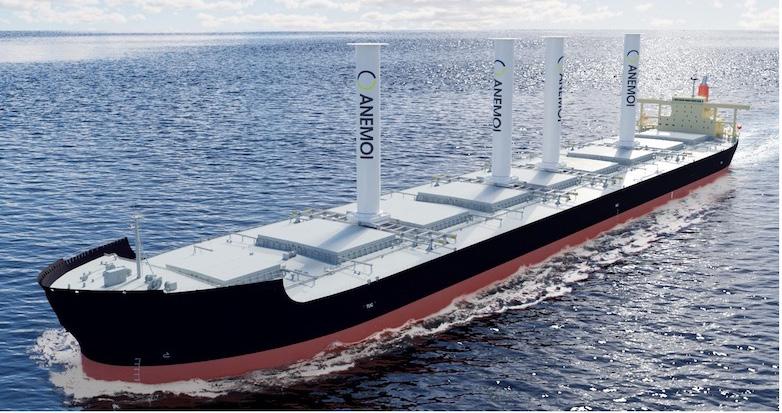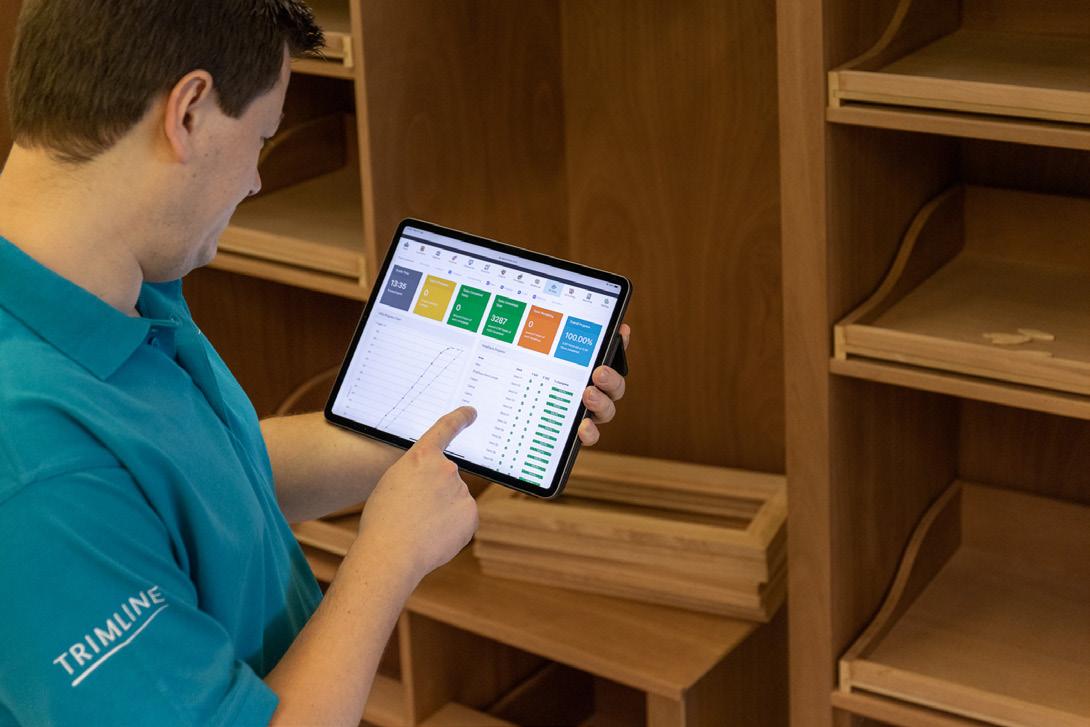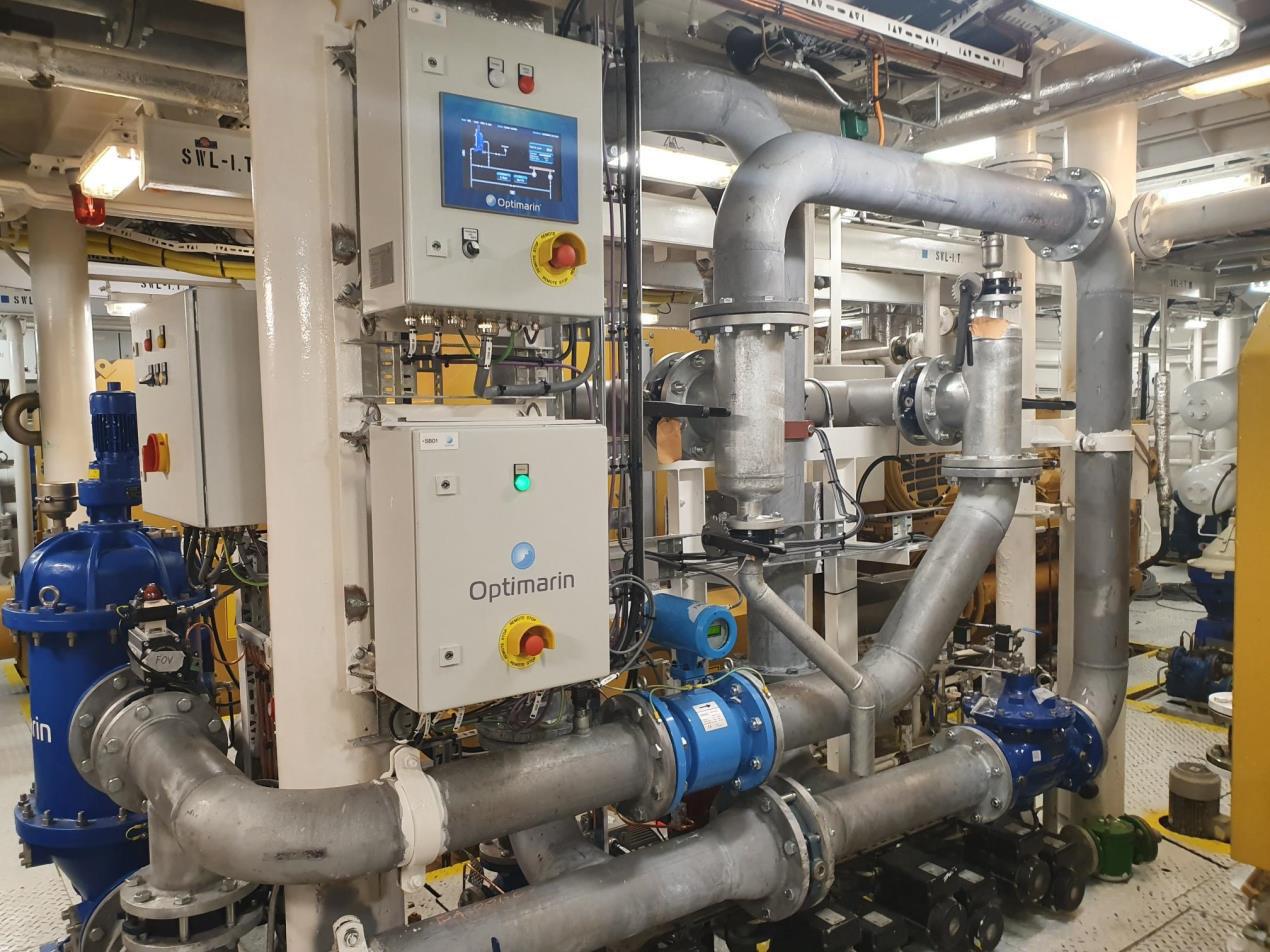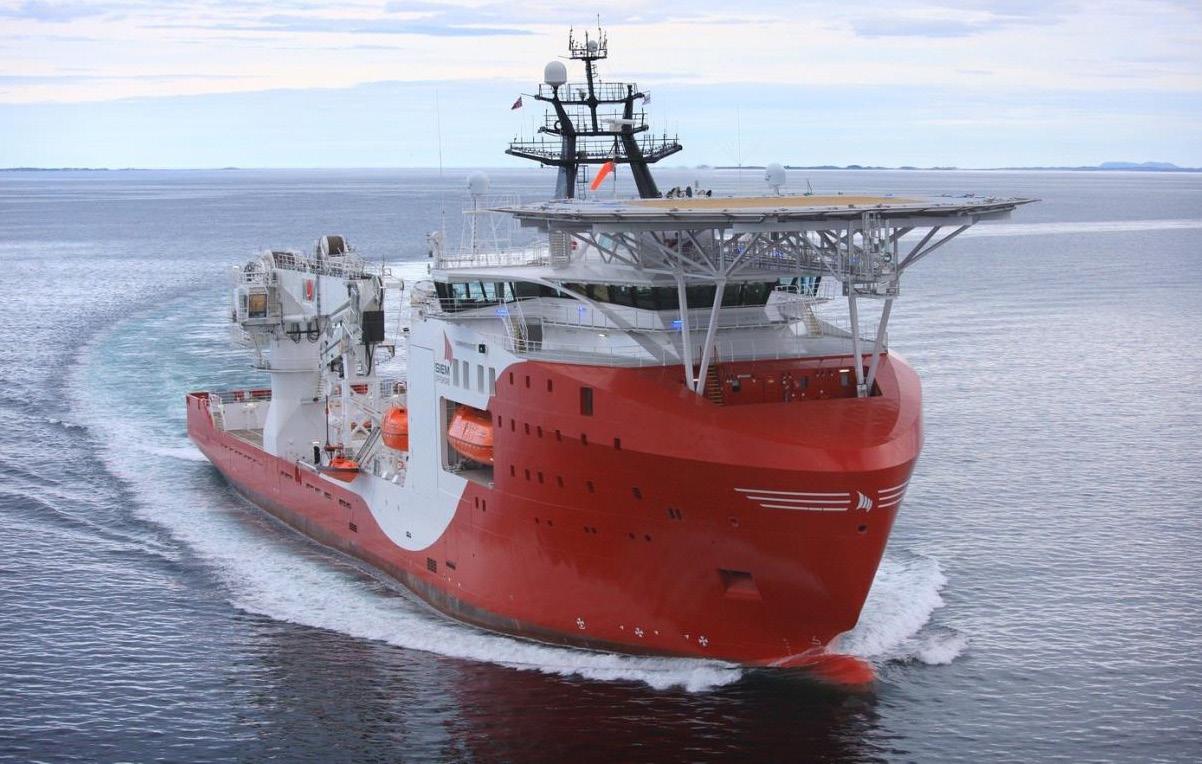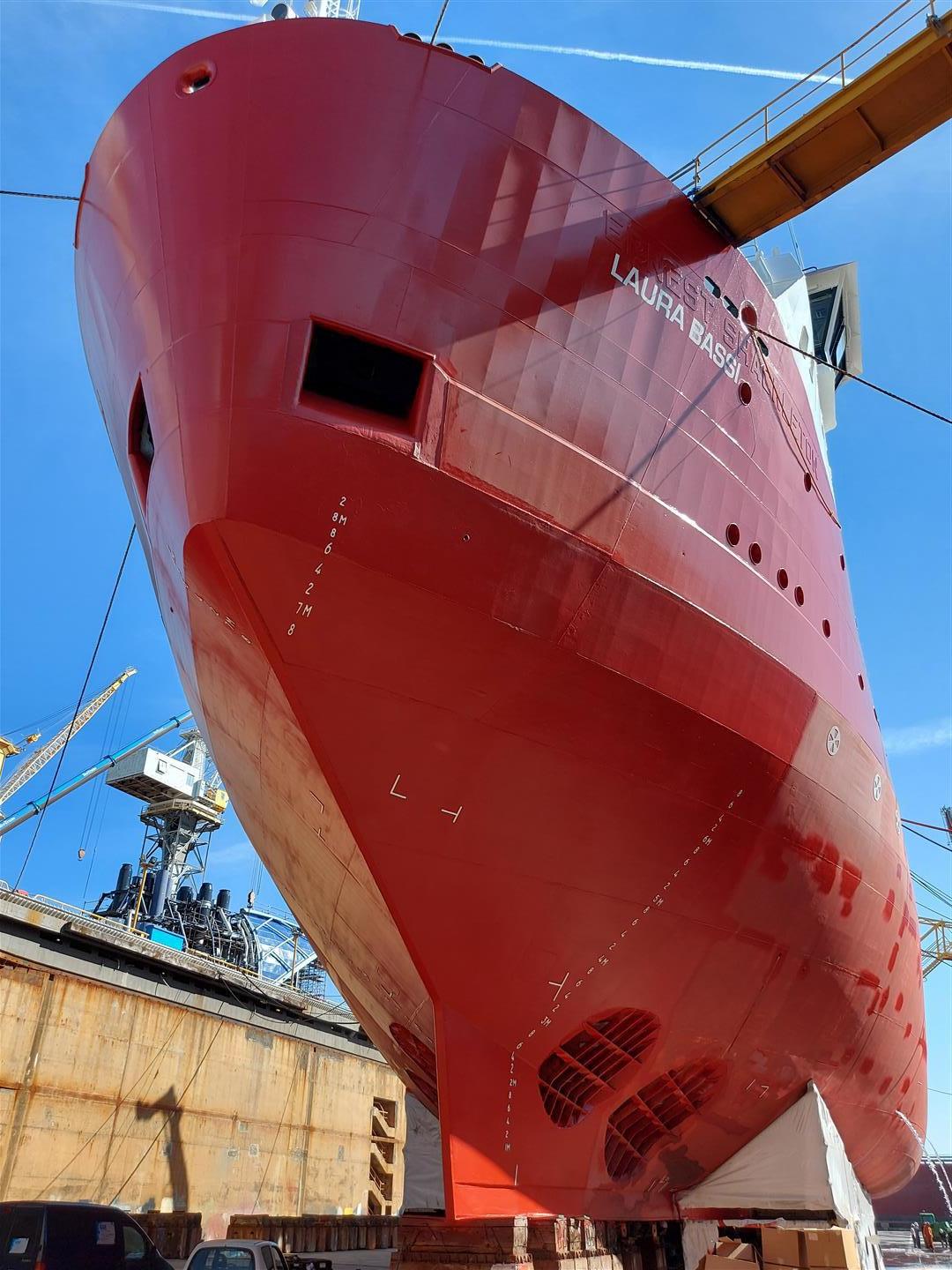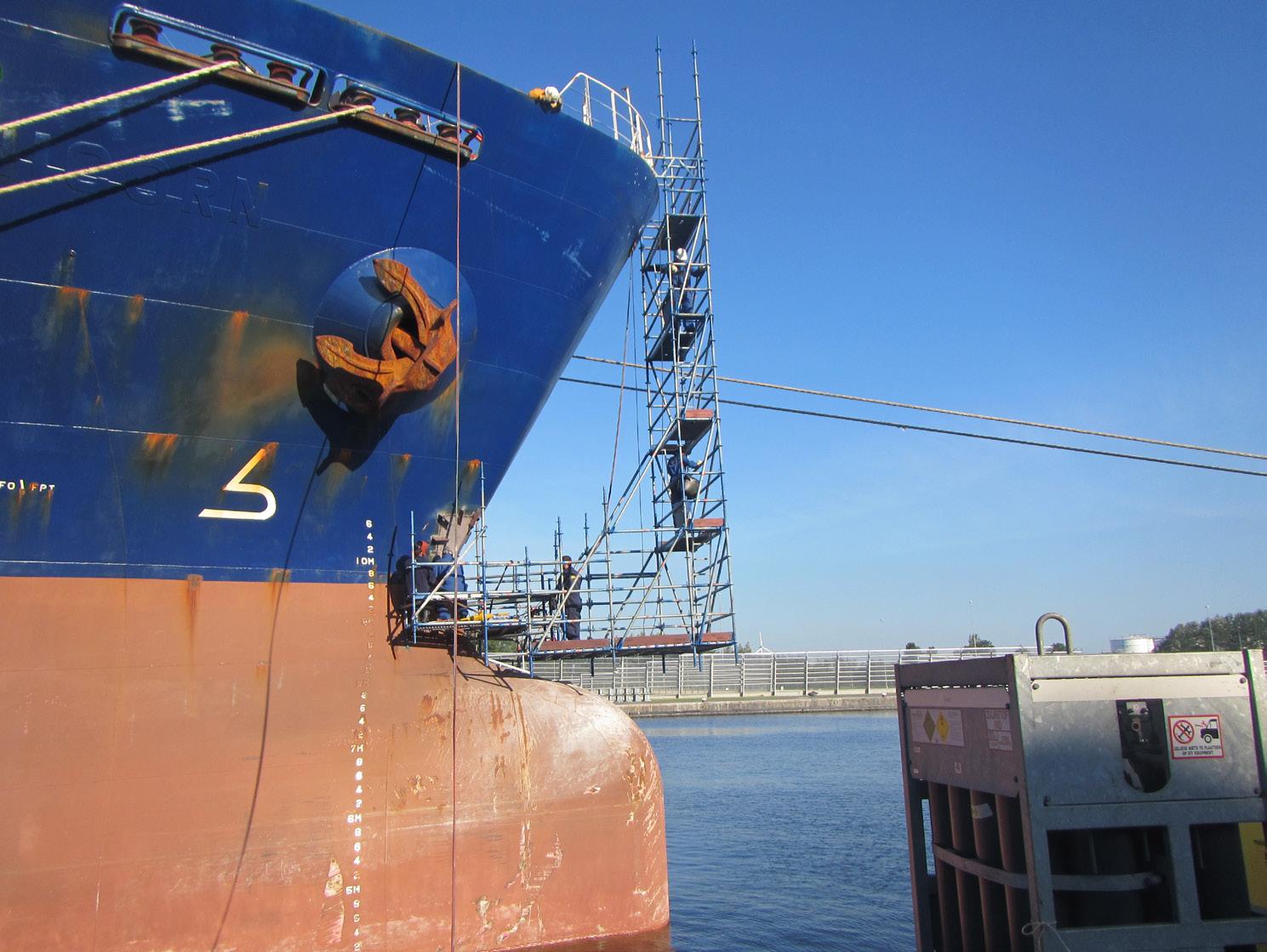Wind Power MOL and Vale sign agreement Japan’s Mitsui OSK Lines has announced an agreement with Brazil’s Vale International to conduct a joint study on installation of Anemoi’s Rotor Sail wind propulsion system on a 200,000 dwt in-service bulk carrier, which mainly transports iron ore for steel production. The goal is to reduce GHG emissions from the vessel while underway. Rotor Sails are unique, tall cylindrical sails that can be installed on the deck of commercial vessels. The Rotor Sails make use of the aerodynamic phenomenon known as the ‘Magnus Effect’. As the cylinder rotates within an airflow, a forward thrust force perpendicular to the apparent wind direction is created, which delivers additional thrust to the vessel. The thrust generated can either provide additional vessel speed or maintain vessel speed by reducing power from the main engine. The joint study team will examine and verify the number of Rotor Sails to be installed and the effect of GHG reduction, working closely with Anemoi Marine Technologies, the manufacturer of the Rotor Sails. Anemoi, based in the UK, installed the world’s first Rotor Sail on a newbuilding ultramax bulk carrier in 2018. The MOL Group is implementing five initiatives to realise the mid-tolong-term targets set out in the ‘MOL Group Environmental Vision 2.1’. Including this opportunity, it will pursue one of the initiatives ‘Enhancement of Energy-Saving Technologies’ and continually strive to reduce GHG emissions in co-operation with leading companies in various industries, with the goals of ‘Achieving net zero GHG emissions by 2050.’
Neptune Shipyard completes wing sails installation Holland’s Tharsis Sea-River Shipping has concluded the installation of two retractable wing sails on its 88 m, 2,364 dwt diesel-electric general cargo vessel Tharsis at the Neptune Shipyard in Hardinxveld-Giessendam (formerly IHC’s Merwede Shipyard, near Rotterdam). The work was undertaken at the same time as the vessel was having its air lubrication system upgraded. The 3 m x 9 m TwinFoil units are supplied by Netherlands-based eConowind and the units are both integrated in a specially designed aluminium Flatrack from which the folding TwinFoil’s can be deployed. The TwinFoil is a further innovation for eConowind next to their previously designed VentiFoils. The TwinFoil is a wing with a flap principle similar to those used by aircraft during landing and take-off. “With this installation operating in both river and North Sea routing with varying winds we are eager to see how the rigs perform, especially with the unique combination of this self-adjusting technology in combination with a modern diesel-electric drive,” says Frank Nieuwenhuis, CEO of eConowind. Designed and built at the Dutch Shipyard De Kaap in 2012, the Tharsis is a unique vessel of this type. Her innovative diesel-electric propulsion system along with the air lubrication system already reduces the vessels carbon footprint while with a ballast air draft of 6 m and a minimal sailing draft of 1.65 m she can go where most other sea-going ships can’t go. “Tharsis Sea-River Shipping was one of the first companies to install a diesel-electric propulsion train on its general cargo vessel with the aim of fuel and emission reduction back in 2012. After installation of a hull
An artist’s impression of the Rotor Sails on-board a Vale Ultramax bulk carrier
air lubrication system in 2020 the installation of the Econowind Twinfoil system is a logical next step towards the companies aim of becoming zero emission,” states Jan Albert Bosma, co-owner of Tharsis Sea-River Shipping. The wind-assist equipment will be carefully monitored and evaluated as part of the WASP (Wind Assisted Ship Propulsion) project, which is funded by the Interreg North Sea Europe programme, part of the European Regional Development Fund (ERDF) and brings together universities and wind-assist technology providers with ship owners to research, trial and validate the operational performance of a selection of wind propulsion solutions. “As Tharsis Sea-River Shipping joined the WASP project as the last participant we are happy that the Twinfoil system is now installed on-board the Tharsis,” adds Bosma. “We are looking forward to playing our part within the WASP project and providing valuable information that will undoubtedly accelerate the adoption of wind assist systems in shipping.”
MoU between KM and Norsepower Norway’s Kongsberg Maritime (KM) has signed a Memorandum of Understanding (MoU) with the leading global provider of auxiliary wind propulsion systems, Finland’s Norsepower Oy. The collaboration between these industry leaders will facilitate the addition of wind propulsion to KM’s integrated power and propulsion systems. Under the MoU, ship owners and shipyards will be able to choose between fully integrated systems, or solutions incorporating stand-alone products. Firmly focused on sustainability and efficiency, KM already
The wind sails on-board the Tharsis
Volume 19 Issue 5 – Page 51

